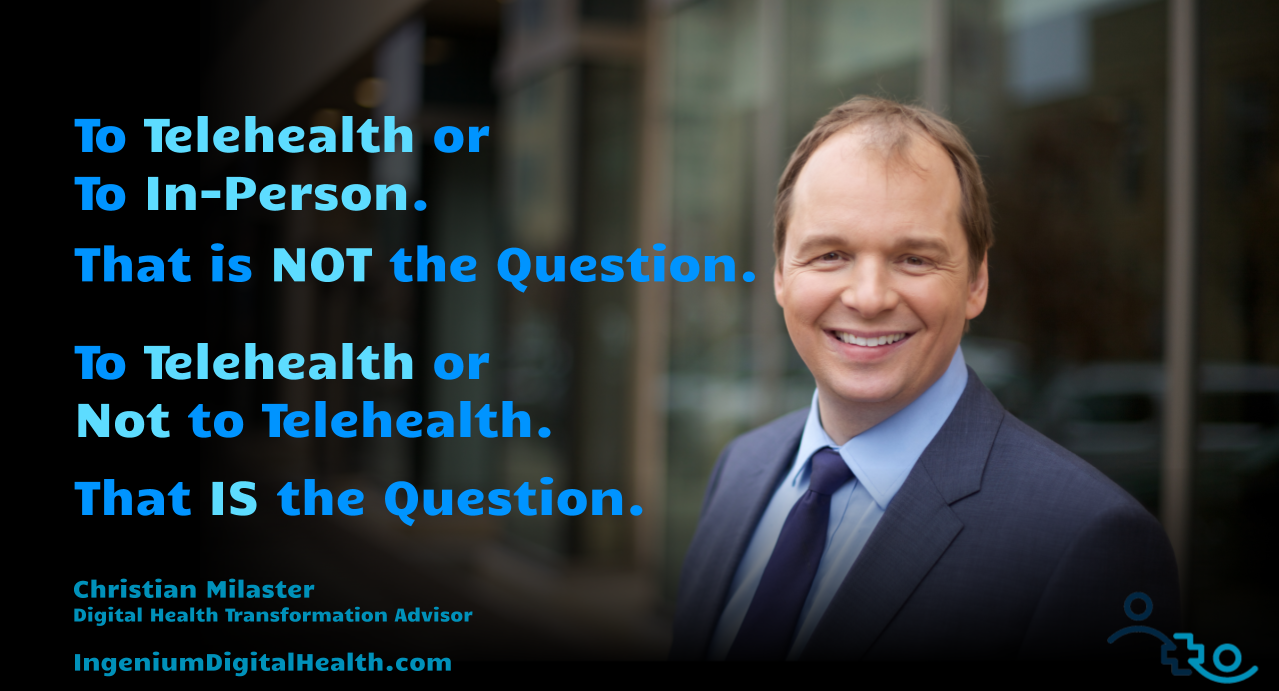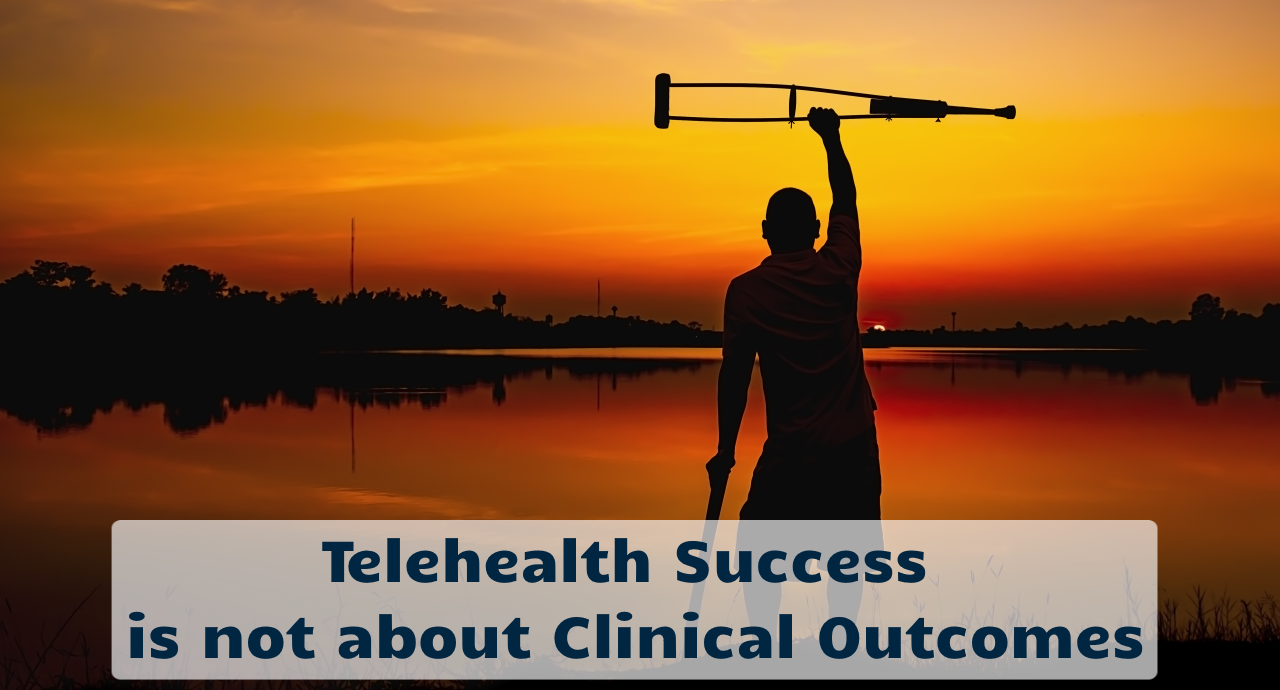I’d be the first to tell you that anything we do in healthcare has to focus on achieving positive clinical outcomes. And, just like any other care delivery modality, that includes telehealth. But Telehealth Success is not about Clinical Outcomes.
Measuring Clinical Outcomes
For 33 years I’ve been involved in using technology and workflow optimization to improve the delivery of services. And it’s always been puzzling (and sometimes irritating) to me that as soon as the novel, technology-enabled way of delivering as service was presented, the “success” of this new-fangled way was assessed with a quite harsher lense as the old way of doing things.
The same holds true for telehealth. When the conversation turns to assessing the success of telehealth, some people are quick to dismiss non-clinical key metrics such as financial sustainability, physician satisfaction or patient satisfaction. Rather they insist on focusing on the “clinical outcomes” that telehealth is (or is not) achieving.
Let me ask you: when is the last time someone measured or even merely questioned the way that the “in-person dermatology service” produced positive clinical outcomes for the patient population? When have we ever discontinued an in-person clinical service because it did not produce positive clinical outcomes for the patient panel?
I get it. Ultimately the purpose of improving care delivery is about the clinical outcome. Busy-ness by itself is not going to heal anyone, we need focus and efficacy. Just like key business metrics are about results, key healthcare metrics are about clinical outcomes. And we should not lose sight of that.
One of the major challenges with that lofty goal, however, is that the patient’s health outcomes are often mostly influenced by factors beyond the care received. There are socio-economic factors such as a job loss, a single parent, or an insecure housing situation. There are underlying behavioral health conditions not addressed by the clinical care. There is the fragmentation of care or the lack of coordinated care decisions. And none of these factors have anything to do with the fact that the care was delivered “at a distance”.
So to dismiss a new care delivery modality on the grounds that we “don’t have sufficient data about clinical outcomes” sounds to me like a red herring or a convenient excuse not to get involved with telehealth.
The other challenge with clinical outcomes is that they are very lagging (i.e., it takes a lot of time for a care approach to show outcomes). They are also difficult to assess comparatively. We’d have to ask ourselves: good clinical outcomes compared to what? Compared to in-person care only? That would prove quite difficult to show precisely, accounting for the difference in personality and socio-economic background between patients.
To Telehealth or not to Telehealth?
As I see it, it simply boils down to an oversimplification made by those hesitant about telehealth: They are comparing care delivered by telehealth to care delivered in person. And of course in-person care wins that comparison hands down.
That’s like comparing a home-cooked meal with a restaurant meal. Yes, a home-cooked meal most likely will be cheaper and healthier. But a meal in a restaurant has a lot of convenience and exposure to new foods one would not try at home.
The same is true for telehealth: it’s a lot about convenience and can provide access to care previously out of reach for patients.
What I suggest is that we compare receiving care via telehealth to not receiving any care. “No care” including cancellations, no shows, or no response or engagement by the patient.



It is hard for a busy single mom with 3 kids and 2 ½ jobs to make the time to see her doctor for her diabetes. But she may be able to squeeze in an 18-minute telehealth visit while her kids are planted in front of the TV before dinner.
Now, will the telehealth visits improve her outcomes? Maybe. If she is engaged in the care plan laid out by her physician. But the fact that telehealth was used as the care delivery modality has very little to do with that. It depends on the physician’s ability to engage her. It depends on the post-visit communication to get the patient to fill medications, conduct tests, etc. A challenge that is the same for in-person care, as soon as the patient leaves the clinic.
In fact, we can confidently assume that a telehealth visit was probably better than a missed in-person visit. That’s the true value of telehealth and its most valuable contribution to positive clinical outcomes.
Telehealth is not (just) about Clinical Outcomes
Thus Telehealth Success is not (just) about clinical outcomes. Telehealth Success is about making sure that the telehealth services are of good quality (so clinicians can focus on providing care, not compensating for technical or operational deficiencies) and financially sustainable (i.e., that you get paid for it).
Do you agree?








To receive articles like these in your Inbox every week, you can subscribe to Christian’s Telehealth Tuesday Newsletter.
Christian Milaster and his team optimize Telehealth Services for health systems and physician practices. Christian is the Founder and President of Ingenium Digital Health Advisors where he and his expert consortium partner with healthcare leaders to enable the delivery of extraordinary care.
Contact Christian by phone or text at 657-464-3648, via email, or video chat.







Leave A Comment